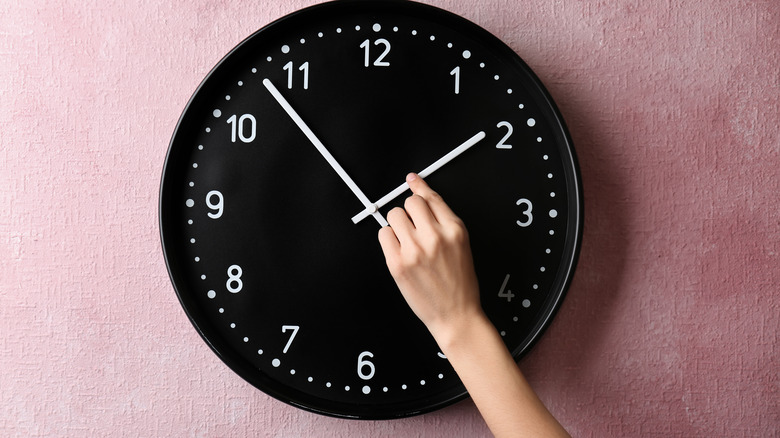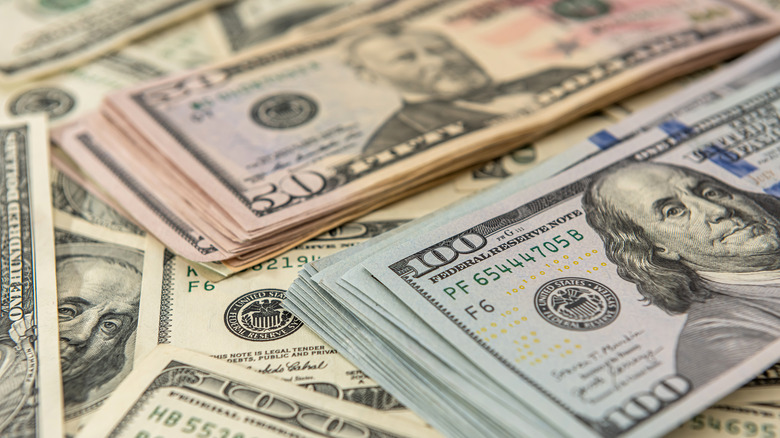Why Daylight Saving Really Began
For many regions, the custom of pushing the clocks forward in the summer and back in the autumn to enjoy more sunlit hours started in 1918, per the National Conference of State Legislatures. Current daylight saving time (DST) practices are dictated by the 1966 Uniform Time Act and the Energy Policy Act of 2005. All states except Hawaii and Arizona observe DST, but many more would like to join them and stop changing their clocks twice a year.
Some 33 states want to keep their clocks just where they are year-round. According to The Old Farmer's Almanac, legislation for "lock the clock" has been proposed. Additionally, seven in 10 Americans feel the tradition is disruptive, according to a 2019 AP-NORC poll. Still, what clock system should remain in play if DST is taken away — should the United States choose standard or daylight saving time as its ultimate measurement? The survey showed that 71% of Americans would like daylight saving time to disappear altogether. But most U.S. senators prefer the opposite — keeping daylight saving time all year round. While a few U.S. states favor that as well, they need Congress to pass the appropriate federal law to allow them to do so, Time and Date says.
DST reimagined and still not perfect
Daylight saving time began in World War I as an effort to save fuel, according to The Old Farmer's Almanac. You might have heard that switching the clocks also helped the farmers have more time in the field, but that is a myth — farmers actually fought against the practice. For them, the policy didn't make sense because while some extra hours of sunshine were gained, their livestock became confused by the time change. When the war ended, the federal law instituting DST was reversed in 1919 because the policy was so unpopular.
During the Second World War, President Franklin D. Roosevelt reintroduced DST all year long from February 9, 1942, to September 30, 1945. After that, from 1945 to 1966, DST was practiced in the United States, but without any regulation. Confusion ensued, and some industries — like transportation and broadcast — sought standardization. Farmers, by the way, still didn't like the measure. That's when President Lyndon B. Johnson stepped in with the Uniform Time Act, which made DST a permanent and more uniform practice in the United States. States could opt out, though, which is just what Hawaii and Arizona did.
Like everything else, it's all about the money
When the energy crisis hit in 1974, the Emergency Daylight Saving Time Act gave Americans year-round DST in an attempt to save fuel, according to The Old Farmer's Almanac. The law failed, though, because people hated so much darkness in their morning — especially parents who had to nervously watch their children wait for school buses on unlit corners. The next big change to DST came in 2005 with the Energy Policy Act, which altered the start and end dates for DST, making it begin in March instead of April and end in November rather than October.
When this new development occurred, some saw it as a win for commerce, such as candy makers who saw extra daylight time added to Halloween and treat-giving, said NPR. "What we don't tend to know as Americans is that the biggest lobby on behalf of daylight saving since 1915 in this country — and to this very day — is the Chamber of Commerce," said Michael Downing, a professor at Tufts University and author of "Spring Forward: The Annual Madness of Daylight Saving Time." "They understood something very early on: If you give workers daylight, when they leave their jobs, they are much more apt to stop and shop on their way home."


